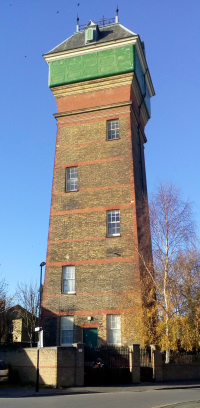Ladywell
Ladywell, Lewisham
A verdant residential locality beside the River Ravensbourne on the west side of Lewisham

As early as 1472 a spring was recorded on the site of what is now 148 Ladywell Road. It was called Our Lady’s Well because of its supposed healing powers and was visited by pilgrims on their way to Canterbury.
In the 18th century the Ladywell area was sometimes called Bridge House, after a farmhouse that was the only significant structure in the vicinity.
From the 1780s smallholders enclosed strips of waste bordering Ladywell Road, often applying to the manor court for squatters’ rights and being granted 21-year leases. On the expiry of these leases the farmers became the direct tenants of the lord of the manor.
In 1830 a brick-built bridge replaced the wooden footbridge that had formerly provided the sole connection with Lewisham.
Ladywell station opened on the Mid-Kent Railway in 1857 and the Lady Well was covered over as terraced housing began to line Ladywell Road. On the far western side of the locality the Lewisham (now Ladywell) and Deptford (now Brockley) cemeteries opened in 1858. As the former Ideal Homes website pointed out, “for much of its short history the dead population of Ladywell has outnumbered the living.” Originally separated by a wall, the two cemeteries were merged in 1965.

From the mid-1880s a cluster of municipal buildings provided various civic amenities, from a swimming bath to a coroner’s court. In 1894 the five Thames-side parishes of the Bermondsey poor law union acquired Slagrave Farm and built the huge St Olave’s workhouse, which opened amid scenes of extraordinary jubilation in 1900.
Part of the workhouse survives as Ladywell Lodge; the rest has been replaced by housing on Dressington Avenue, Rushey Mead and Slagrove Place, together with some council facilities, including the Ladywell Centre.
The workhouse’s water tower is also still standing, though it has of course been converted to residential use.
Council housing was built in Ladywell after each of the world wars, but some former meadows were left open because they were liable to regular inundation when the Ravensbourne overflowed. These now constitute Ladywell Fields, a 46-acre park divided by the railway lines into three separate sections. The creation of weirs and levées eliminated the flooding problem and sections of the fields were taken for the creation of Ladywell Arena, on the border with Catford, and a major extension of University Hospital Lewisham.
The neighbourhood is well endowed with green spaces, as the satellite map below shows. In addition to Ladywell Fields (and the cemetery), Hilly Fields has been a public park since 1896, thanks largely to the efforts of the heroic Octavia Hill. The Friends of Hilly Fields website has a brief history of the park. The photograph at the top of this article shows a view across the rooftops of Ladywell from the northern end of Ladywell Fields to Hilly Fields.*
Ladywell leisure centre opened in 1965, in what is really Lewisham itself rather than Ladywell. It was colourfully revamped in 2004 but has since been superseded by the Glass Mill leisure centre, which opened in June 2013 on Loampit Vale, opposite Lewisham station. There were hopes that the old centre might be converted to a cinema but the building was quickly demolished and replaced by a kind of pop-up village called PLACE/Ladywell, with 24 homes on the upper floors and an enterprise hub, creative workspace, retail space and café at street level. PLACE was to have remained here until 2020, by which time it was hoped that a long-term plan for the site would have been developed and approved. However, the council subsequently decided that it will “remain for the foreseeable future” – but will ultimately be replaced by approximately 100 “new, affordable high quality council homes for local people in housing need.”
The residents of Ladywell ward tend to be relatively young and well-educated.
Henry Williamson, the celebrated author of Tarka the Otter (but who was less well regarded for his fascist connections), grew up in Eastern Road. In 1984 the Henry Williamson Society and Lewisham council placed a commemorative plaque on the house where he spent the greater part of his childhood and youth, and which is the setting for the early volumes of A Chronicle of Ancient Sunlight.
Postal districts: SE13, SE4 and SE6
Population: 14,515 (2011 census)
Station: Southeastern Trains (zone 3)
Further reading: Robert Smith, The Well of Our Lady, Ladywell Village Society, 1986
